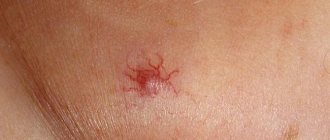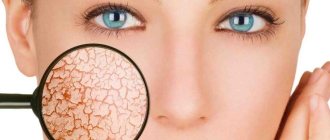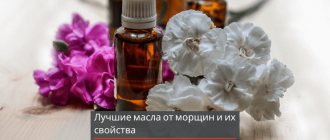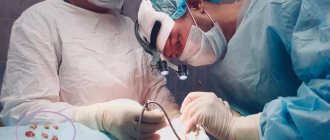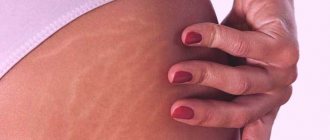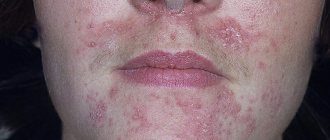In addition to these, there are other causes of dry hand skin:
- avitaminosis;
- lack of care for delicate skin;
- use of cosmetics with irritating ingredients (alcohols, oils, scrubs, preservatives, etc.);
- non-compliance with the balance of nutrients and minerals;
- some medications (diuretics, laxatives, etc.);
- dry indoor air (radiators, air conditioners, heaters);
- untreated chlorinated water (at home, in swimming pools);
- smoking;
- constant stress;
- insufficient amount of fluid drunk per day;
- diabetes;
- disorders of the thyroid gland;
- psoriasis.
Individual consultation
Cosmetical tools
The right choice of hand cosmetics will help solve the problem. Various creams have an exfoliating and softening effect:
- “La-Cri” (natural extracts of string, avocado, nuts, violets, as well as panthenol and bisabolol, which are part of the product, help get rid of peeling, dryness and inflammation);
- “Lipobase” (gently exfoliates and nourishes the skin of the hands, used during periods of exposure to low temperatures and adverse weather conditions);
- “Allantoin” (restores the epidermis and exfoliates keratinized areas);
- “Losterin cream” (used for flaking and itching);
- “Topping up” (thanks to active ingredients: hyaluronic acid, shea butter, moisturizes and nourishes the skin);
- Payot (hyaluronic acid, glycerin and a complex of vegetable oils included in the composition nourish, moisturize and restore damaged skin).
Unattractive and dangerous
Dry skin on the hands is not only an unattractive sight, it also brings a lot of inconvenience. Your hands constantly itch, there is discomfort, irritation, allergic reactions, dry spots, peeling, the skin on your hands cracks, and pain appears.
If you don’t consult a dermatologist in time and figure out why your skin is dry and cracking, the situation will only get worse and dry eczema may appear. This disease affects the deeper layers of the skin and requires complex treatment.
Skin thickening, or hyperkeratosis
Diabetes mellitus
Human papillomavirus (HPV)
Fungus
Menopause
Climax
17038 16 August
IMPORTANT!
The information in this section cannot be used for self-diagnosis and self-treatment.
In case of pain or other exacerbation of the disease, diagnostic tests should be prescribed only by the attending physician. To make a diagnosis and properly prescribe treatment, you should contact your doctor. Thickening of the skin: causes of occurrence, what diseases it occurs with, diagnosis and treatment methods.
Definition
Hyperkeratosis is an abnormal thickening of the top layer of skin (epidermis) as a result of excessive sun exposure, exposure to chemicals, frequent friction or pressure. In addition, hyperkeratosis can occur against the background of certain diseases.
Thickening of the skin occurs in the stratum corneum of the epidermis, which is the end point of the differentiation process of keratinocytes - cells containing the protein keratin. It is in the stratum corneum that keratinocytes lose water and their nucleus and turn into scales of the stratum corneum - corneocytes.
Normally, corneocytes are gradually exfoliated, due to which the skin is renewed.
With hyperkeratosis, accelerated differentiation of keratinocytes occurs, and the physiological exfoliation of horny scales from the skin surface, on the contrary, slows down.
Types of hyperkeratosis
Depending on the origin, acquired and hereditary hyperkeratosis are distinguished.
According to clinical manifestations.
- Calluses are a common type of hyperkeratosis. There are several types of calluses, but they all appear due to thickening of the skin in places most susceptible to mechanical stress. Moreover, such skin changes can be associated both with increased physical activity and with various chronic diseases, which is typical for elderly patients.
- Horny (tilotic) eczema manifests itself as hyperkeratosis of the palms and soles.
- Psoriasis is an autoimmune inflammatory disease in which hyperkeratotic scaly plaques form on the skin.
- Actinic keratosis usually appears as small, reddish, scaly bumps that appear after excessive sun exposure. Actinic keratosis is a serious condition with a high probability of malignancy and requires mandatory consultation with a doctor.
- Seborrheic keratosis is characterized by small brown or black patches, usually located on the face, neck, shoulders and back. This is one of the most common benign skin tumors in adults.
- Follicular hyperkeratosis (“goose bumps”) is characterized by blockage of the mouths of the follicles with keratinized epidermal cells.
- Epidermolytic hyperkeratosis is a rare hereditary disease that appears immediately at birth. Newborns have reddish skin, sometimes covered with small blisters.
Possible causes of skin thickening
Skin hyperkeratosis can occur in people who neglect regular skin care procedures, as a result of which dead cells of the stratum corneum accumulate and form keratomas - benign neoplasms.
Our skin is constantly exposed to adverse external factors, such as chlorinated water and detergents, and UV radiation. As a result, the protective lipid layer of the skin is damaged, and moisture begins to rapidly evaporate from its surface, and corneocytes lose their ability to physiologically exfoliate.
In diabetes mellitus, hyperkeratosis becomes a consequence of metabolic disorders and deterioration of skin microcirculation.
Wearing tight or uncomfortable shoes, especially with flat feet, congenital foot pathologies, and obesity, can cause thickening of the skin on the feet.
The development of cervical hyperkeratosis (leukoplakia) is promoted by the human papillomavirus.
The cause of hyperkeratosis can be chronic fungal infection, as well as herpes zoster.
It is believed that symptoms of thickened and dry skin may be caused by a deficiency of vitamins A, E, D and C.
Hyperkeratosis often results from a lack of the hormone estrogen in women during menopause.
Diseases and conditions in which hyperkeratosis develops
- Diabetes.
- Obesity.
- Flat feet.
- Ichthyosis.
- Psoriasis.
- Eczema.
- Menopause.
- Fungal skin infection.
- Shingles.
- Erythroderma.
- Atopic dermatitis.
- Seborrheic keratosis.
Which doctors to contact for hyperkeratosis
Most often, the first consultation regarding skin thickening is addressed to a dermatologist. After a thorough examination, collecting complaints, finding out the patient’s medical and family history, conducting laboratory and instrumental studies, a consultation with an infectious disease specialist may be required.
Diagnosis and examinations for thickening of the skin
A thorough history taking, taking into account all the patient’s complaints, examination and additional diagnostic methods will help determine the cause of hyperkeratosis.
- Clinical blood test with a detailed leukocyte formula to identify inflammatory processes in the body.
Center for Aesthetic Cosmetology "SM-Cosmetology" - a place where they will help you
Our Center employs experienced specialists of various profiles - cosmetologists, nutritionists, dermatologists, gastroenterologists, endocrinologists, etc. They will not only help soften the skin of your hands, but will also identify the causative factor of this condition.
The examination at the clinic is carried out comprehensively and individually, taking into account all possible characteristics of the body and past diseases. This approach allows you to choose the optimal treatment and procedures.
Among the methods that guarantee softening and rejuvenation of the skin of the hands in SM-Cosmetology:
- endermolift LPG;
- ultrasonic cleaning;
- microcurrent therapy;
- Starvac massage;
- spa treatments;
- RF lifting;
- ZEIN OBAGI (therapeutic cosmetics);
- various hand skin care products.
Call us and we will answer all your questions in detail!
—>
Traditional methods
Folk remedies will also help eliminate peeling on your fingers.
The use of traditional methods is possible after consultation with a doctor. If peeling is caused by dermatological diseases, herbal and animal preparations are prescribed as additional means to the main methods of treatment.
Honey
- A mask of honey and glycerin will help get rid of dry skin on your hands. To prepare the medicine, mix honey and glycerin in equal proportions and add 2 tbsp. spoons of water. A homogeneous consistency is applied to the affected areas, left for 15–20 minutes, and then washed off with water.
- A mask of honey, egg yolk and olive oil, taken in equal proportions, nourishes and cleanses the skin of the hands.
- An ointment made from honey (4 tbsp), olive oil (5 tbsp), sandalwood essential oil (5 drops) and turmeric (half a teaspoon) will stop peeling and cracking of the skin. Lubricate your hands with this medicine, put on cotton gloves and warm mittens on top. The duration of the procedure is 30 minutes.
Celandine
- Hand baths with a decoction of celandine are effective.
- An ointment based on dry herbs, vegetable oil and wax delicately exfoliates and softens the skin on the affected areas. To prepare the ointment, dry celandine is poured with water and 250 ml of oil is added. The mixture is brought to a boil, removed from heat and cooled. Add wax to the cooled broth and put it on the fire again until the beekeeping product is completely softened. The finished ointment is stored in the refrigerator.
Animal fat
Animal fats are actively used in cosmetology. Compresses with badger, bear, goose and other fats, applied to washed and dry hands, perfectly cope with the problem of peeling fingers.
Oils
Before going to bed, it is advisable to moisturize the skin of your hands with almond, olive, linseed or peach oils. Grapeseed oil will relieve redness. To achieve maximum effect, rub the oil into the skin with light massage movements for 5–7 minutes, then put on cotton gloves.
Types of vitamin complexes
Vitamin complexes will help solve the problem of lack of nutrients. The following drugs deserve attention:
- “Aevit” (vitamins A and E have a beneficial effect not only on the skin, but also on hair and nails, strengthening and healing them);
- “Vitrum Beauty” (the complex has a regenerating effect on the skin, nail plates and hair);
- “Perfectil” (improves the structure of the skin, helps get rid of flaking);
- “Revalid” (in addition to vitamins, includes amino acids, mineral salts, plant extracts, restores metabolism, improves tissue regeneration and cleanses the skin);
- “Alphabet” (a complex of vitamins and minerals that helps restore the skin).
Creams, ointments, and vitamins most often eliminate not the cause, but the symptoms of the disease and are used in combination with the main therapy prescribed by a specialist.
How to treat dryness between fingers
When the skin between your fingers dries out, the first reason is that the skin is poorly hydrated. You need to concentrate on what you use when washing your hands (regular soap or antibacterial soap). Soap consists of alkali, which greatly dries the skin, so replace soap with special foam and gel, or you can choose liquid soap. It is important that if dry skin between the fingers is due to heredity, constant and proper care will help remove the feeling of tightness and maintain a well-groomed appearance.
Care Tips:
- Try to dry your hands after each wash.
- Wear rubber gloves when cleaning and washing clothes.
- Don't go outside in the cold with wet hands.
- Wear gloves in frosty weather.
- Lubricate the skin of your hands with cream and special ointments.
If the skin becomes dry between your fingers, you should not use household chemicals. A mask made from egg whites and lemon juice will help in this case. Apply for 15-20 minutes, wash off your hands and anoint with nourishing cream. You can try oatmeal, season it with oil and keep your hands in this mixture for 20 minutes.
Important: If peeling of the surface layer of skin begins, the area of the pads hurts or blood appears, you need to visit a doctor as soon as possible.
Application of traditional medicine
- Olive and sunflower oils help with dry fingers. Take any oil and heat it in a water bath, then soak gauze with it, folded in two or three layers. Place gauze on your hands and wrap it in paper, secure with special gloves. For minor damage, the procedure can be performed once. Wrap 2-3 times a week if there is significant dryness.
- Treatment with starch. High fat cream (one liter), three tablespoons of starch and a tablespoon of natural honey. Mix the ingredients and keep your hands in the resulting mixture for 30 minutes. Rinse and pat dry with a towel.
- You can make cream at home. Take two tablespoons of butter and a spoon of beeswax. Stir the mixture in a steam bath and put it in the refrigerator. Use the cream morning and evening.
- In a water bath, mix 30 grams of beeswax, 10 grams of oil and a teaspoon of vitamin A and E. Store the prepared cream in the refrigerator. Apply to dry areas after three hours. Good for cracked skin between fingers.
- When washing, it is optimal to use herbal infusions made from nettle, linden or plantain. They relieve inflammation and activate the skin restoration process.
- When cleaning the house, if you don’t have gloves, lubricate your skin with silicone cream. It will help protect your hands from the harmful effects of chemicals.

